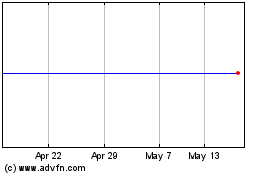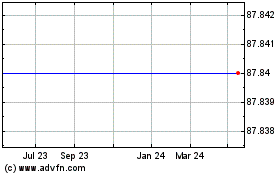RNS No 5527k
SIEMENS AG
11th December 1997
Pierer: Net income expected to exceed DM3 billion - over three-quarters of all
Siemens business fields will be in top International positions in a few years
Business portfolio optimized - new economic value added initiative - 28
inventions a day
Siemens will substantially increase its earnings and business volume in fiscal
1998, stated Dr. Heinrich v. Pierer, President and CEO of Siemens AG, Berlin and
Munich, at the company's annual press conference today. "In fiscal 1998, we are
aiming at a net income of over DM3 billion, excluding extraordinary items.
From today's vantage point, we expect orders to total between DM110-120
billion, and sales to reach DM110-115 billion. "In the past fiscal year,
Siemens pushed up orders 12% to DM113.1 billion. Sales climbed 14% to DM106.9
billion, topping the 100-billion mark level for the first time - in the
year of the company's 150th anniversary. Net income rose 5% to DM2.608 billion.
"We exceeded our growth targets for the year and generated recording earnings.
Pretax earnings climbed 9% to over DM3.5 billion," noted Pierer. Using the
DVFA/SG formula, earnings per share were DM4.65, compared with DM4.48 in
fiscal 1996. The communications segment made the biggest contribution by far to
company earnings. The Public Communication Networks Group continued its dynamic
international growth, more than doubling its earnings to nearly DM800 million.
"We have adjusted well to the structural changes taking place in the industry."
Earnings in the industry segment grew by roughly DM350 million. All three
operating groups in the segment improved their results, helped by the success of
innovative new products and systems, solid progress with comprehensive
productivity drives and cost-cutting programs, and the pruning of loss areas."
Pierer explained that the Semiconductors Group saw its earning burdened by
extreme price erosion in memory products and the high start-up costs for its new
plants. Yet despite these factors, the Group still kept its earnings in the
triple-digit range, at DM100 million.
Despite these successes, work remains to be done: three groups were in the red.
Medical Engineering (Med) showed a loss due to high restructuring charges.
"Ongoing efforts worldwide to cut costs in the health-care sector and sharply
declining prices put strong pressure on the Group," noted Pierer. "Without its
restructuring costs, Med would have stayed in the black. The Group will be
profitable again this year." The loss posted by the Transportation Systems Group
(VT) were due to high up-front costs for major projects, restructuring costs,
and supplementary costs for large projects. Like its competitors, VT has to
cope with intensive price competition in the rail sector. The Group will show a
lower loss this year, and achieve a turnaround in fiscal 1999, according to
Pierer. The third group to report a loss, Power Transmission and Distribution,
faced intensified market deregulation and overcapacity in the industry. Pierer
noted that problems with projects in the power systems control sector further
impacted earnings.
Target: internafional markets
In reviewing the company's regional business, Pierer said: "We expect to see
growth in our domestic market this year, after five years of stagnation." Yet
once again, most growth will be generated by international business. In the
past fiscal year, new orders and sales outside Germany increased over 20%,
respectively.
Pierer pointed out that North and South America accounted for about 20% of the
company's business, and Asia-Pacific for more than 10%. Germany's share is
around 35%, and the rest of Europe nearly 30%. "Our European home market
generates some 65% of our sales. Five years ago, around 50% of the total was
accounted for by Germany alone." This shift of regional importance for Siemens
will continue, Pierer explained. "We have set concrete targets: within a few
years, North and South America will generate around 25% of our total sales. Asia
will account for 20%. And Europe will generate only half of our sales, down from
65%.
In this context, Pierer emphasized that turbulence in Asia's currency and
capital markets had virtually no impact on the company's business. The
conversion of figures from local Siemens companies into German marks following
the devaluation of some currencies had only a minimal effect on the growth rates
of sales and earnings for the fourth quarter. "Even though the overall economic
growth rates in the Little Tiger countries have been adjusted downward, we
believe that Asian electrical markets will still clearly outperform Western
European and North American markets."
Globalization secures jobs in Germany
The company's dynamic international business is reflected in its employment
figures. The number of employees outside Germany rose 13,000 to 189,000. In
Germany, the workforce declined by 3,000 - a number considerably lower than
expected at the beginning of the fiscal year. Pierer noted that "an additional
3,000 jobs are no longer consolidated at Siemens, but have been retained outside
the company. Worldwide, Siemens employed 386,000 people at the end of September
1997, some 7,000 (or 2%) more than the previous year.
The CEO made it clear that the rigorous build-up of value added in growth
markets throughout the world has helped push up exports from Germany to these
markets. "Between fiscal 1993 and fiscal 1997, sales outside Germany grew by
DM26.3 billion to DM70.6 billion. Some 56% of this increase was accounted
for by exports from our companies in Germany, and the remaining 44% by our
regional companies. The company's international business thus secures jobs at
Siemens in Germany. Our Asian business alone secures about 40,000 jobs here in
Germany."
Portfolio optimization underscores steady change
Pierer cited the ongoing optimization of the company's business portfolio as a
vital strategic goal. "At present, roughly two-thirds of our business fields are
ranked first, second or third worldwide. Within the next three to five years, we
want to push this total up to 75%. And we intend to continue increasing the
number after the turn of the century. To achieve this, we constantly monitor the
performance of our business portfolio." Divestments of DM5.5 billion were
offset by acquisitions and alliances, such as the planned purchase of the
industry segment of Elektrowatt in Switzerland and the acquisition of
Westinghouse's conventional power generation activities. "Our acquisition of the
Westinghouse division opens up unparalleled new opportunities. By merging the
resources and technologies of Siemens and Westinghouse, and by rounding out our
presence in important target markets, we will rank number two worldwide in this
growth sector." The optimization of the company's business portfolio is an
expression of the process of steady change at Siemens. "Siemens is a living
organism," stressed Pierer.
"We've made impressive progress with top"
The CEO called attention to the successful implementation of the top program
throughout Siemens. Productivity in fiscal 1997, for example, climbed 9.5%,
representing cost savings of DM9.7 billion. "Since top's launch four years
ago, the cumulative savings have totaled nearly DM30 billion." Major progress
has also been made in another area: with innovations. "The number of invention
registrations at Siemens more than doubled in the last three years and reached
6,000 in fiscal 1997. That's equivalent to 28 inventions from our labs and
development centers every working day. The number of improvement suggestions has
grown 100% to 80,000 a year, representing savings of around DM300 million last
year alone. We've made impressive progress with top."
The basis for this success is Siemens' changing corporate culture. Pierer cited
a number of examples. "Part of our culture change can be quantified. One year
ago, we launched our "top in form" program. The result: the average level of
sick days for Siemens in Germany declined nearly one full percentage point to
3.5%. This marks the lowest level in the company's 150-year history, and is well
below the average for Germany's metalworking and electrical industries." In
addition, Siemens launched a comprehensive part-time work initiative in
November. Pierer is convinced that part-time employment will help meet the
company's needs as well as the lifestyle of many employees. Part-time employment
can also help secure jobs. At present, Siemens has 12,600 part-time employees
and intends to increase this number. Part-time work for older employees also
plays an important role here.
"Win" initiative launched to build company value
"The aim of all initiatives in our top movement is to continue strengthening
the company's long-term profitability," explained Pierer. "To consistently
direct all top goals toward creating value in the company, we have further
refined our criteria and introduced a new measure of performance - Win. We
assess the performance of our operating units on whether they earn more than the
cost of their invested capital. In other words, on whether they create
additional value for the company. This instrument adds a rigorous new dimension
to our previous guideline, return on investment (ROI)."
Increasing company value is crucial, since building up new markets requires
billions in up-front capital, and Siemens can access additional capital only if
it offers attractive returns. "By rigorously improving our competitiveness, we
ultimately benefit our employees as well as our shareholders," stressed Pierer.
"We are responsible to our shareholders to use their capital as effectively and
profitably as possible. At the same time, only in a profitable company can
there be secure jobs and motivated people. In short: profitability and
motivated employees are really two sides of the same coin."
1.10.95 1.10.96
to to Change
30.9.96 30.9.97 Variation
POS 1 2 3
1 New orders (Mrd.DM) 100,8 113,1 12%
2 Domestic business 38,0 35,6 -6%
3 International business 62,8 77,5 23%
1.10.95 1.10.96
to to Change
30.9.96 30.9.97 Variation
4 Sales (Mrd. DM) 94,2 106,9 14%
5 Domestic business 36,4 36,3 0%
6 International business 57,8 70,6 22%
7 Employees (Tsd) 379 386 2%
Personnel
8 Domestic operations 203 197 -3%
9 International operations 176 189 7%
1.10.95 1.10.96
to to Change
30.9.96 30.9.97 Variation
10 Capital spending (Mrd.DM) 7,9 9,8 24%
11 Net income (Mrd. DM)
2,491 2,608 5%
Development of Siemens groups worldwide (incl, intersegment shipments)
New orders Sales Income before taxes
(in DM Million)
1995/ 1996/ % 1995/ 1996/ % 1995/ %vU 1996/ % v.U.
96 97 96 97 96 97
Power Generation
(KWU) 9,1 9,3 +3 8,0 9,5 +19 410 5,1 255 2,7
Power Transmission
and Distribution (EV)6,0 6,7 +11 5,8 6,5 +12 42 0,7 -149 -2,3
Industrial and
Building Systems
(ANL) 9,8 9,7 -2 9,4 9,7 +3 -102 -1,1 7 0,1
Drives and Standard
Products (AS1) 8,9 9,2 +3 8,7 9,1 +4 117 1,3 285 3,1
Automation (AUT) 6,9 7,4 +4(1)6,6 8,0 +11(1)509 7,8 581 7,2
Public Communication
Networks (ON) 13,4 16,4 +22 11,8 14,5 +23 354 3,0 797 5,5
Private Communication
Systems (PN) 8,7 11,3 +13(1)8,6 11,1 +13(1)503 5,8 460 4,2
Defence Electronics
(SI) 1,8 1,2 -30(1)1,6 1,5 +5(1) 63 4,0 105 7,1
Siemens Nixdorf
Information Systems
(SNI) 13,9 15,9 +14 13,6 15,4 +14 52 0,4 105 0,7
Transportation
Systems (VT) 6,5 7,1 +11 4,3 4,1 -4 19 0,4 -177 -4,3
Automotive Systems
(AT) 4,0 4,5 +12 4,0 4,5 +12 111 2,8 153 3,4
Medical Systems
(MED) 7,2 8,0 +12 7,1 7,6 +6 30 0,4 -170 -2,2
Semiconductors (HL) 4,8 6,3 +31 4,7 5,9 +26 603 12,9 109 1,8
Passive Components and
Electron Tubes (PR) 2,1 2,5 +19 2,0 2,3 +11 239 11,7 216 9,5
Electromechanical
Components (EC) 1,4 1,3 +12(1)1,3 1,2 +9(1) 34 2,6 15 1,2
Osram 5,7 6,3 +12 5,7 6,3 +12 369 6,5 468 7,4
(1) Comparable due to reorganization
END
TSTKLMMZRMMLNMG
Siemens N Ord (LSE:SIE)
Historical Stock Chart
From Jun 2024 to Jul 2024

Siemens N Ord (LSE:SIE)
Historical Stock Chart
From Jul 2023 to Jul 2024
